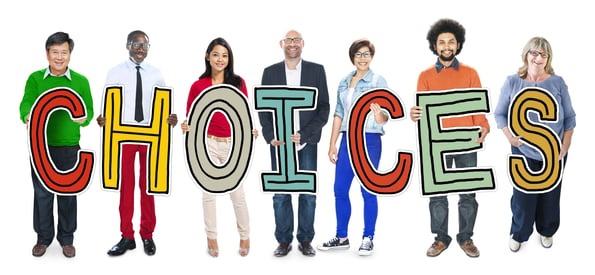
When it comes to social media, nonprofits sometimes feel pressured to do everything they can, up to and including posting five to seven times a day on every social media platform in existence. Obviously, this is unrealistic, but the answer isn’t to stay off social media entirely, either. There’s a lot of value in finding the balance between no social media and all the social media, and the balance will be different for each nonprofit client an agency represents.
Expectations and Training
Depending on the agency’s relationship to the nonprofit, they may or may not be handling their social media accounts. Whether the nonprofit is handling it in-house or the agency is handling it, every new social media platform adds extra minutes to the responsibility of whoever is crafting the posts. Even for someone with knowledge of the platform, posts can take at least 5 to 10 minutes to source and craft.
With one Facebook post per day, that can be up to an hour a week. Add in two to three daily posts on Twitter, plus one on Instagram, and you’re up to between 2 and 4 hours a week on top of the person’s other responsibilities -- and that doesn’t include strategy, maintenance, and outreach.
Every platform also has a learning curve. Ideally, someone using a social media platform for a company will have a good deal of experience with it. If not, they have to spend time getting to know its inner workings and best practices. If the agency is handling the posting, this learning curve won’t be as high, but for nonprofits with small teams, it can take a while for someone to learn a new platform. Add in three or four platforms they’ve never used and mastery will take even longer.
Managing ROI
When viewed in this light, with every minute costing the nonprofit money, it’s easier to imagine how much money each ineffective social media platform is going to cost. Especially for small nonprofits, a few hours a week can make a huge difference. The above example only took into account three of the largest social media platforms, but when you add in every new platform that starts to gain ground, social media posting can quickly become a full time job, which is outside the realm of possibility for most small nonprofits.
This is why it’s important to consider each platform as a separate investment. Just as you might use ExactAsk to increase ROI on mailings and email campaigns, you can use the social media platforms with the highest efficiency rates to boost ROI for your nonprofit clients using social media marketing. The platforms that bring the best results are the ones you want to be putting the most work hours into on behalf of your clients as well as the ones you want to be spending advertising dollars on for them. The agency doesn’t necessarily have to guess and check here, though. Use demographics to determine which platforms will be the best for your clients.
Finding Your Demographic
There are several factors to consider when determining which social media platforms a client should be using and which they should ignore. First, think about the nonprofit’s target demographics. Are they going for millennials? Gen-X? Higher income levels? Average income levels? Even the types of projects a nonprofit deals with can influence which social media platforms will work best for them.
Cross-reference the demographic profiles of your nonprofit client’s prospective donors with the readily-available demographics of each social network the client is considering. Some of them will be obvious matches -- Facebook, for instance, is still relevant for almost every demographic -- and those are the ones you should focus on first.
You may also be able to easily eliminate some. For instance, unless the client is heavily targeting the post-Millennial generation, they probably won’t need to be on Snapchat. Others may fall into a gray area, and those are the ones you’ll want to consider more carefully. Start with the obvious ones, and try slowly adding others that overlap well with the client’s profiles as you go.

